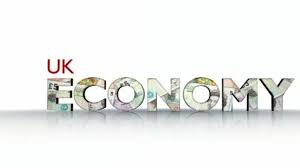The banking sector was fraught with pitfalls in 2017 as the combinations of lower volatility and perceived political risks hampered result at the biggest US financial institutions. Recent released fourth quarter results largely highlighted this phennomenon.
Nonetheless thanks to greater forward-looking clarity owing to the passage of
Trump's tax bill and the expectation that the Federal the under-performance that saw the sector lag broader market indices like the s&p 500 and dow Jones industrial Average. Watch our video brought to you by plus500 to understand what to look out for when trading US banking stocks
Trump's tax bill and the expectation that the Federal the under-performance that saw the sector lag broader market indices like the s&p 500 and dow Jones industrial Average. Watch our video brought to you by plus500 to understand what to look out for when trading US banking stocks
within minute of the Federal Reserve
announcing that it would put up interest rates by a quarter-piont in the
middle of last month, the biggest bank by assets in America said it
would do the same of its main lending rate, then at 4.25 per cent.
Millions of credit-card holders and small-business borrowers would pay
another 25 basic points in interest, effective the next morning. But
would regular savers get an automatic boost, too, through higher rates
on deposits
they would not. Rates for
savers would be unchanged, a JP morgan spokesperson confirmed.The ability to earn more on assets, while capping the cost of liabilities to depositors, should keep the shareholders of us banks happy this year. Analysis and investors say that, even after two successive years of standout performance, the outlook for bank stocks remains bright. in 2016 the likes of JPMorgan, Bank of America and citigroup shrugged off years of sluggish post-crisis return, beating most benchmarks, boosted by prospects of higher interest rates, lower taxes and lighter regulations under the new regime of president Donald Trump
In 2017 the big banks pulled clear again, as three rate rises from the Fed improved net interest margins, or the gap between the yield on banks’ assets and the rates they pay to borrow money.
According to Jason Goldberg, analyst at Barclays, big banks’ average cost of deposits rose by 17 basis points over the two years to the end of the third quarter 2017, implying they passed on just 17 per cent of the 100bp increase in the federal funds rate over that period. During the Fed’s last rate-raising cycle, the average was about 60 per cent.
Plenty of fund managers are willing to bet on more share price gains to come, especially if banks can hold the line on their cost of funds, and if the main regulatory agencies — all but one of which will be led by appointees of President Trump by midyear — respond to orders from the White House to loosen Obama-era rules. Lower tax rates will help, too, with particularly big boosts for US-centric banks such as Wells Fargo and US Bancorp.
And if capital markets revenues pick up after a relatively drab year, and loan growth begins to accelerate, so much the better. “There are plenty of singles and doubles,” says Mr Goldberg.
That is why valuations could have some way to run. The KBW banks index is trading at about 1.5 times book value, the highest for more than a decade, up from a pre-Trump level of about 1 times.
But the S&P 500 is up to 3.3 times book and the spread between the two indices is still near a record.
“It’s been a nice run [for bank stocks], but we think the backdrop remains favourable,” says Tom Bergeron, senior fund manager at Frost Investment Advisors in San Antonio, Texas, which has $3.7bn in assets under management. He is maintaining an overweight position in the banks and in BofA — the most sensitive to interest rate increases — in particular.







